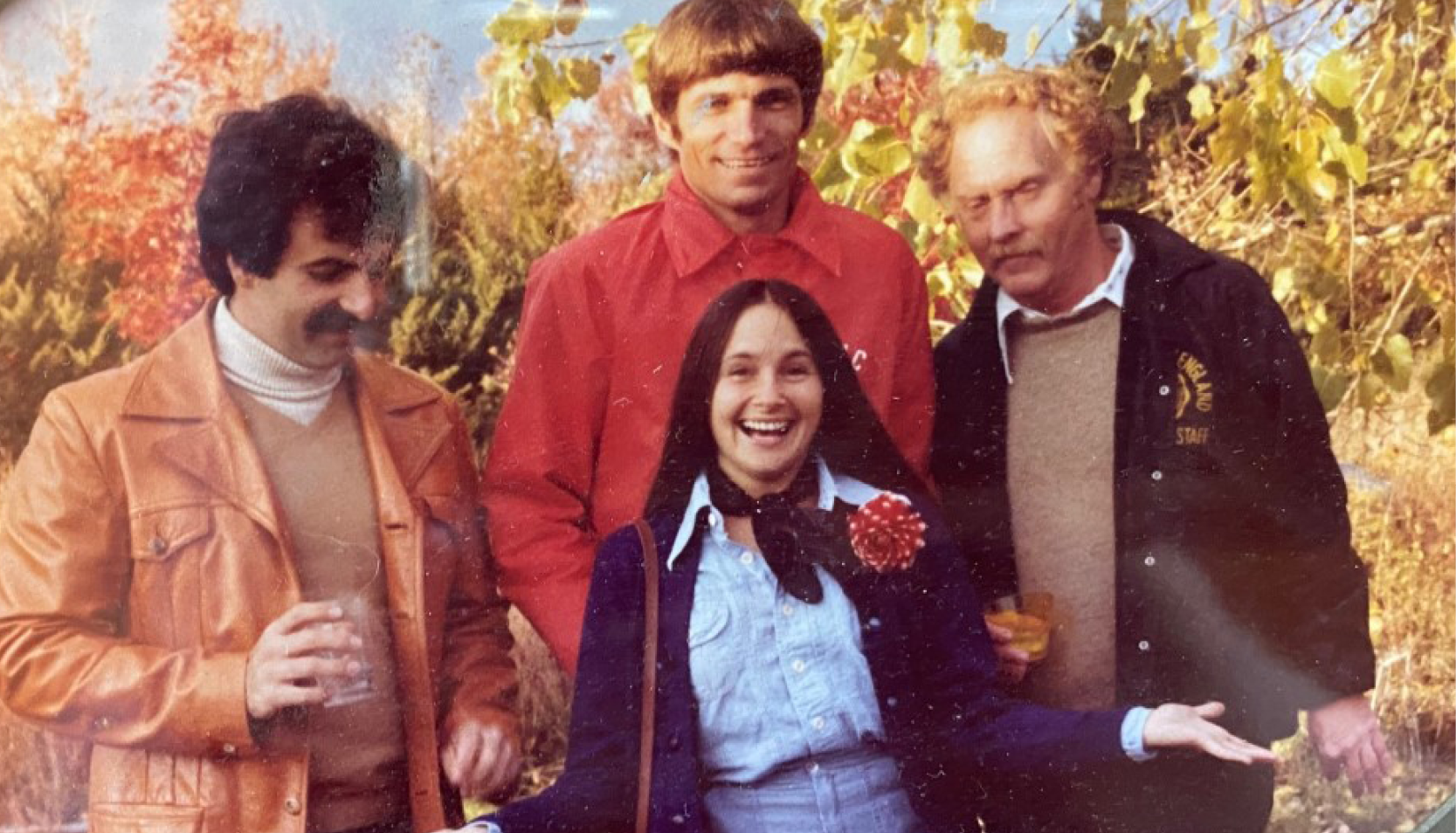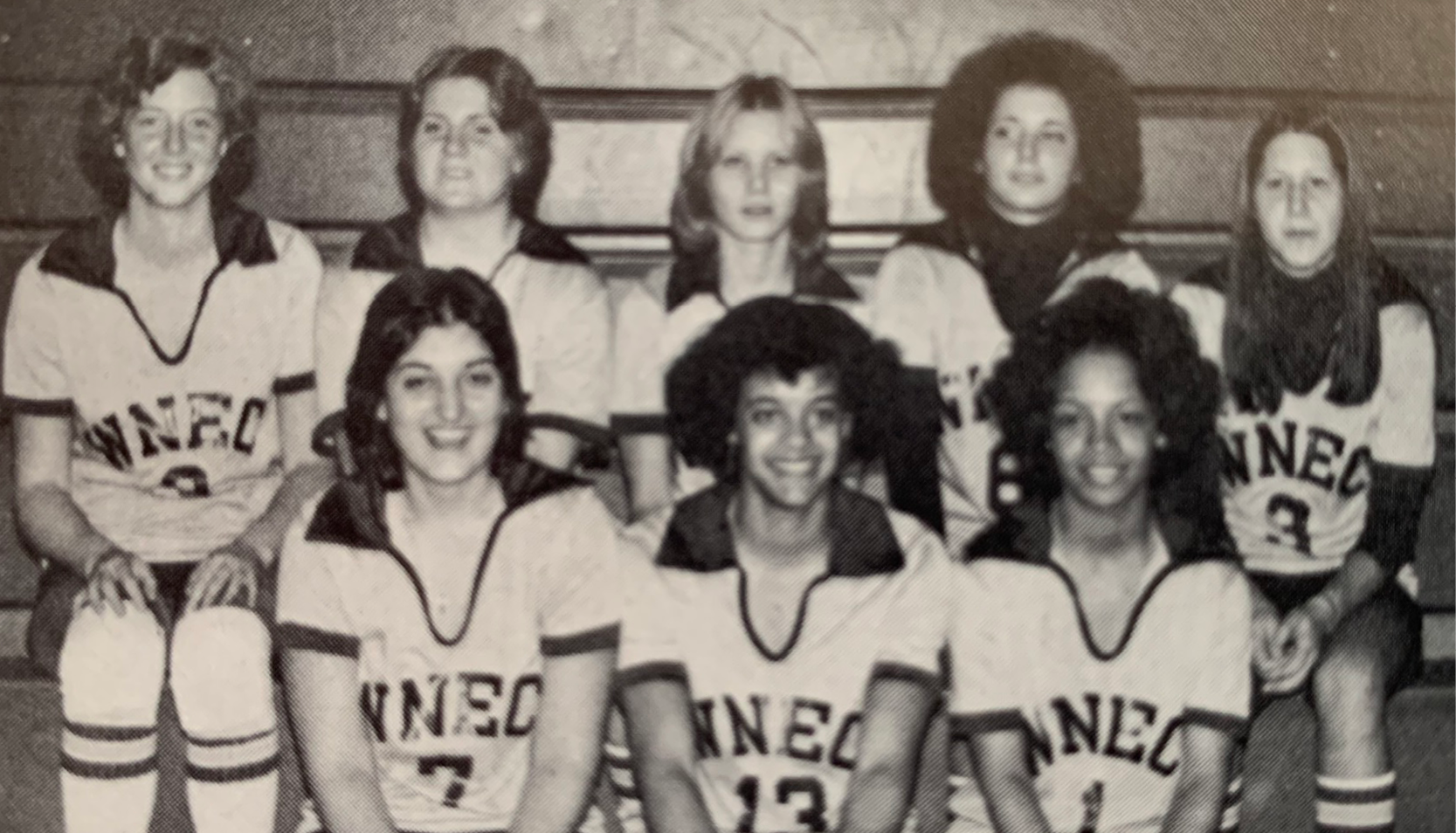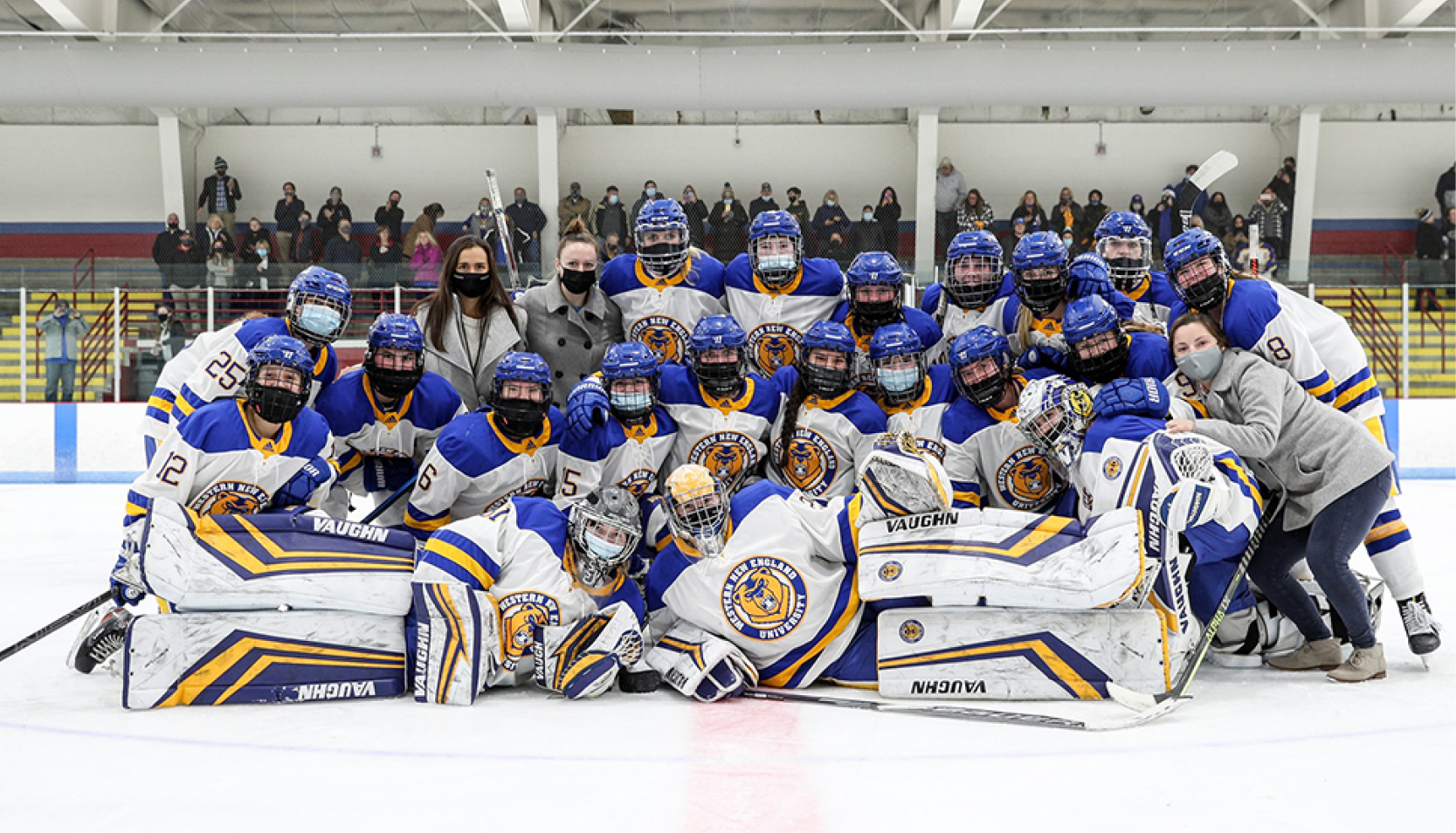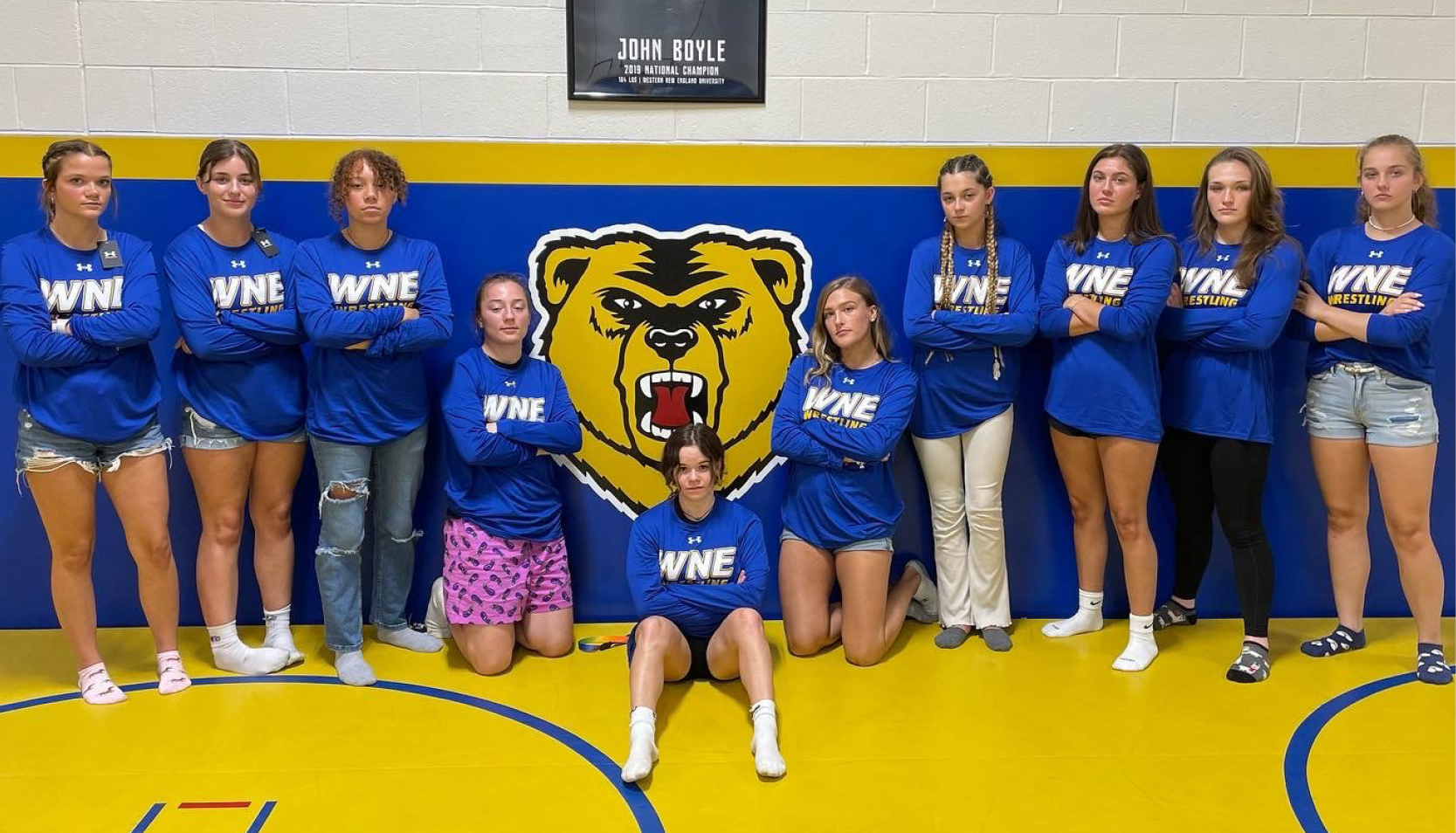
A Landscape Painted with Progress
Celebrating the 50th Anniversary of Title IX and the Evolution of Golden Bear Women’s Athletics
By Kate Burke
Organized competition for both men’s and women’s intercollegiate athletics was a landscape painted exclusively for men at the start of the twentieth century, most notably with the start of the Intercollegiate Athletic Association, now known as the National Collegiate Athletic Association (NCAA). Well over a century later, the scene has been painted and repainted with brittle brushstrokes that illustrate the mountains and valleys of the uphill journey for women to achieve equality, equity, and access to sport.
Prior to the advent of Title IX of the Education Amendments Act of 1972, the canvas of intercollegiate athletics for women was shaped and shifted with shades of progress dating back to the early 1940s, starting with the development of the Division for Girls’ and Women’s Sports of the American Association for Health, Physical Education, and Recreation. In the three decades to follow, opportunities for women in intercollegiate athletics evolved with various iterations of associations, committees, and commissions, ultimately resulting in the development of the Association for Intercollegiate Athletics for Women (AIAW) in 1971. Coupled with the passage of Title IX, the AIAW created the women’s sports equivalent to the NCAA, providing opportunities for the national scope of competition, championships, and travel that the NCAA had been providing men for decades. By the early 1980s, the NCAA absorbed women’s intercollegiate athletics, and the shared and skewed landscape of the NCAA we know today, emerged.
Shifting Gears: A Finite Law and an Infinitely Rocky Road
Title IX historically impacted women in the university environment in a number of notable ways with the emphatic directive that “no person in the United States shall, on the basis of sex, be excluded from participation in, be denied the benefits of, or be subjected to discrimination under any education program or activity receiving federal financial assistance.”
Through the lens of intercollegiate athletics, Title IX set the wheels in motion for women to begin driving on the road to achieving a level playing field in sport, a road that has since seen and continues to experience its fair share of rough terrain, but that has nonetheless provided women the opportunity to access programs, resources, and ultimately equal participation to men in organized sport.
“While opportunities for women in sport clearly exist, the industry is still very much male-dominated, and although change, hopefully for the better, is inevitable, it sometimes seems to come too slowly,” said Curt Hamakawa L’84, Chief of Staff and Secretary to the Board of Trustees, and WNE Sport Management Professor. “While female student-athletes have come a long way since the AIAW and being fully integrated into the NCAA championship structure, there are still pinch points.”
With a bright light cast by Title IX, and the newly compulsory emphasis on enhanced financial support, facilities, travel, equipment, etc., intercollegiate athletics began to find firmer footing and focus in providing opportunities for women to excel. Nationwide, schools like Western New England University had to redefine intercollegiate athletics, leave the male-dominated field in the rearview, and focus on planting the seeds and nurturing the growth of women’s athletics full speed ahead.
“So many people have fought for equity in the sports world,” said Dr. Sharianne Walker, Dean of the College of Business and the first professor in the WNE Sport Management program. “We’re not there yet. We’re making progress and the 50th anniversary of Title IX is a great time to stop and reflect on the progress made, but also to evaluate and think about where we need to go and what kind of work is left to be done.”
The 1960s: Sport at WNE—A Journey Begins
Prior to Title IX, WNE was young in comparison to universities nationwide in developing and implementing men’s varsity athletics, in addition to men’s and women’s club sports and intramurals. In the mid-1960s the landscape of sports on campus featured three men’s varsity sports (basketball, soccer, and baseball) in addition to limited club sports and intramural sports programs. Men’s wrestling, football, and tennis were soon to follow in the 1970s, along with men’s ice hockey and lacrosse in the early 1980s.
Led by Athletic Director Eric Geldart, Jr., great change began to take effect in the late 1960s and early 1970s with the addition of Physical Education instructors and coaches including William Arthur “Red” Downes G’83 in 1968, coach for men’s baseball, basketball, soccer, and golf; Patrick Ricci in 1974, leading baseball; and Patty (Best) Barbalunga L’80 in 1976, the first coach of women’s intercollegiate athletics programs on campus, leading women’s basketball and volleyball. In conjunction with Geldart, the four led the development and forward progress of Physical Education at WNE, not only as department administrators, instructors, and coaches, but also as the visionaries for the future of Golden Bear Athletics, including the enhancement of women’s sports.

“The key is that institutions need to provide equitable participation opportunities by being able to demonstrate that they are fully and effectively accommodating their students’ athletic interests and history, the continuous practice of program expansion, and/or their student-athlete participation is substantially proportionate to the student body,” said Professor Hamakawa, who is also the former Director of the WNE Center for International Sport Business (CISB), former Director with the United States Olympic Committee, and former Compliance Representative with the NCAA.
“So many people have fought for equity in the sports world. We’re not there yet. We’re making progress and the 50th anniversary of Title IX is a great time to stop and reflect on the progress made, but also to evaluate and think about where we need to go and what kind of work is left to be done.” - Dr. Sharianne Walker, Dean of the College of Business
1970s: Emerging Women's Sports
The early 1970s saw sports and Physical Education flourish at WNE, including the opening of Rivers Memorial Gymnasium, the first indoor athletic facility on campus. Initially intended for varsity sports, clubs, and Physical Education, the facility quickly outgrew the intended utilization as women’s varsity athletics was soon on the horizon.
A short three years after Title IX became law, WNE Athletics quickly evolved as Patty Barbalunga ushered in the first women’s sports teams, basketball and volleyball, in 1975. As a PE Instructor at WNE, prior to making history as the first Golden Bear women’s sport coach, Coach Barbalunga, a former intercollegiate student-athlete herself, had a firm understanding of the challenges ahead, including limited staff, resources, and facility spaces. “I coached looking at the present against a backdrop of the past and into the future,” said Barbalunga, who also earned her Juris Doctor from the WNE School of Law while coaching and teaching on campus.
Leading through a lens of relentless optimism and unforgiving tenacity, Coach Barbalunga was committed to advancing women, advancing sport, and advancing WNE. Along with Eric Geldart, Bill Downes, and Patrick Ricci, she laid the foundation for organized women’s sports on campus and as the 1970s came to a close, progress in the WNE arena of athletics was undeniable with the addition of softball and tennis. “I just hope everybody keeps the eye on the ball; this is a continuum, this is not the end,” said Coach Barbalunga regarding the celebration of 50 years of Title IX.
1980s: Building Blocks of Progress
The rise of WNE women’s sports continued in the early 1980s with the addition of field hockey in 1981, swimming in 1982, and soccer in 1984. By the mid-1980s, gender diversity within the WNE sports landscape was greatly enhanced, but there was still an uphill climb for the five women’s sports to compete for resources with the eight men’s sports that existed at the time. It was evident that the 13 programs had collectively outgrown the physical footprint of athletics on campus.
With Rivers as the only dedicated space for athletics and a number of men’s and women’s teams practicing and competing off-site, the need for a long-term vision for the future of Golden Bear athletics was imperative.
“There have been many advancements in women’s sports through the years, from facilities to travel and other opportunities that were not around in the 1970s and 1980s,” said Associate Athletic Director and former head men’s and women’s tennis coach Jenn Kolins. “The overall respect of female athletes has grown in society, and that respect for our WNE student-athletes is apparent.”



1990s: The Start of a "Golden Era"
The 1990s saw the start of what has been historically dubbed the “Golden Era” of WNE Athletics. Much of the spotlight was cast from the shining moments of women’s sports teams, but also the development of the “Walker Report,” a comprehensive evaluation of WNE Athletics that set the stage for many of the advances in facilities, staffing, and resources that Golden Bear athletics programs enjoy today.
In 1996, Dr. Anthony Caprio became the fifth president of WNE and in short order tasked Dr. Sharianne Walker, the first faculty member in the new Sport Management program in the College of Business, to conduct an evaluation of WNE Athletics. In conjunction with a team of industry experts, what affectionately has been referred to as the “Walker Report,” emerged with 34 recommendations for the future of WNE Athletics, in addition to the development of a robust intramural program. The report, based on observations and evaluation of people, finances, facilities, equipment, and technology, ultimately led to the development of a short and long-term strategic timeline driven by a defined and evolving work plan.
“A good foundation was in place,” said Dean Walker of the state of WNE Athletics prior to the report. “But if we wanted to offer a quality student-athlete experience we really needed to develop the infrastructure to support that. The hallmark of a good athletic program is to be responsive and open, not only to seek opportunities but to be responsive to student interests and be responsive to the environment.”
The Walker Report led to a number of near-immediate changes to Athletics including the 1998 hiring of Dr. Mike Theulen, the second Director of Athletics in school history; the addition of the sixth women’s sport, lacrosse, in 1997; the elevation of administrative staff and coaches to full-time status; the development of the Athletics Council and the Downes Hall of Fame; and the restructuring of the athletic training function to meet the guidelines and standards set forth by the NCAA.
Complementing the profound successes being made to the infrastructure of WNE Athletics in the late 1990s, the women’s soccer team helped close the decade with groundbreaking history on the field as the first WNE women’s program to clinch an East Coast Athletic Conference (ECAC) title in 1998 and reach the NCAA Tournament in 1999. Additionally, the inaugural class of the Downes Hall of Fame was inducted in 1999, including the first female student-athlete inductee Margaret (Apanell) Bastiaanse ’83/G’88.



2000s: A Growing Landscape of Sprawling Successes
The “Golden Era” of Golden Bear Athletics continued to shine in the 2000s with the countless successes of women’s programs, including 14 appearances in NCAA Division III championships.
By the start of the 21st century, WNE Athletics had grown to encompass 10 men’s sport programs, nine women’s sport programs, and a robust intramural program. With 19 varsity sport programs and hundreds of student-athletes, a number of new facilities were in the works and renovations were on the horizon. Golden Bear Stadium and Trelease Park were unveiled in 2002, becoming the home for football, field hockey, women’s lacrosse, and men’s lacrosse. Additionally, renovations were completed at Suprenant Field, the Volvo Outdoor Tennis Courts, and Golden Bear Softball Park.
The decade was highlighted in 2002 by softball earning the program’s first NCAA Division III New England Regional Championship title and punching the program’s first ticket to the coveted Women’s College World Series. The following year, the team made history again by earning the New England Regional title again, repeating their trip to the World Series, and closing out 2003 with an appearance in the NCAA Final Eight and an esteemed 10th ranking in the final national poll.
“No one expected us to win, but that team worked hard all year and left it all out on the field,” said Lori Mayhew ’95, WNE Associate Athletic Director and former Golden Bear softball coach from 1997 to 2018.
Throughout the decade, women’s sport programs continued to dominate the GNAC with 13 tournament titles collectively earned by softball (5), soccer (3), cross country (3), swimming (1), and tennis (1). Additionally, lacrosse won the ECAC Division III New England Championship in 2008 and 2009; Women’s Head Basketball Coach Wendy Davis became the first coach in WNE women’s program history to achieve 100 wins in 2004; field hockey earned the North Atlantic Conference Tournament title in 2005; and women’s lacrosse claimed five New England Women’s Lacrosse Alliance Tournament titles within a span of six years.
THE GOLDEN ROAD
WNE Women’s Sports Titles and NCAA Championship Appearances1995-2006
Great Northeast Athletic Conference (GNAC) Tournament Titles
Softball: 2002, 2003, 2004, 2005, 2006
Soccer: 1995, 1999, 2001, 2002, 2006
Cross Country: 2000, 2005, 2006
Swimming: 2003-04
Tennis: 2003
1998-2015
Eastern College Athletic Conference (ECAC) Tournament Titles
Soccer: 1998
Lacrosse: 2008, 2009, 2011
Volleyball: 2012, 2013
2000-2006
North Athletic Conference (NAC) Tournament Titles
Field Hockey: 2005
2002-2007
New England Women’s Lacrosse Alliance Tournament Titles
2002, 2004, 2005, 2006, 2007
2007-2022
Commonwealth Coast Conference (CCC) Tournament Titles
Softball: 2015, 2018
Lacrosse: 2015
Basketball: 2018-19
Soccer: 2022
NCAA Division III Championship Appearances
1998: Soccer
2001: Soccer
2002: Softball, Lacrosse, Soccer
2003: Softball
2004: Lacrosse, Softball
2005: Lacrosse, Softball, Field Hockey
2006: Lacrosse, Softball, Soccer
2007: Lacrosse
2014-15: Lacrosse, Softball
2017-18: Softball
2018-19: Basketball
2019-20: Basketball
2022: Soccer
2010s: Achievements and Enhacements
In the 2010s, WNE women’s sport programs continued to thrive on the national stage with five appearances in NCAA Championships, including women’s lacrosse in 2014 and 2015, softball in 2015 and 2018, and women’s basketball in 2019.
Enhancement of athletics facilities continued as renovations to Golden Bear Stadium, including the FieldTurf® playing surface, were unveiled in 2011. The $1.5 million Flynn Family Golden Bear Pavilion, featuring state-of-the-art locker rooms for eight of the Golden Bears’ outdoor sports teams, training rooms, public restrooms, and a concession stand, opened in 2015.
“I have seen tremendous growth as a coach here at WNE, both as an institution and within the Department of Athletics,” said Aimee Klepacki, Women’s Lacrosse Head Coach and former college student-athlete. “It is truly special to me to have worked with the lacrosse program from its inception and see how it has evolved and succeeded, not just as a women’s team, but as a sport that has given so many young girls such a great opportunity to play.”
2020s: Progress and Perspective
In the past 50 years, Title IX has undoubtedly changed the landscape of intercollegiate athletics, paving the road for women’s sports into the 21st century. With the start of the 2020s at WNE, continued progress couldn’t be more evident as the University now offers 11 women’s programs, with the addition of women’s ice hockey in 2020 and women’s wrestling in 2021.
“All of our ‘firsts’ are memorable,” said Women’s Ice Hockey Head Coach Katie Zimmerman. “One of the awesome aspects of starting a new program is having the opportunity to hit so many milestones together.”

Tabbed by the NCAA as an emerging sport, women’s wrestling now exists at the NCAA Division III level in New England due exclusively to the pioneering efforts of WNE and the true passion of Mike Sugermeyer G’17, Director of WNE Wrestling and Head Men’s Wrestling Coach. WNE celebrates the inaugural year of women’s wrestling in 2022-2023 as one of only 25 NCAA DIII programs nationwide and the first in New England.

Continue to follow the journey of WNE women’s sports programs and learn more about all Golden Bear Athletics programs and opportunities at wnegoldenbears.com.


